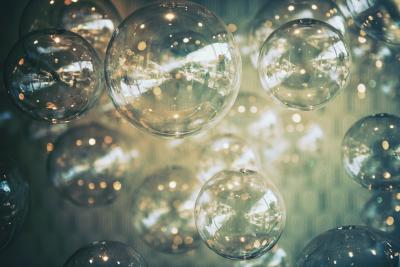Memories put down roots in dreamland
We used to think the brain rested while we were sleeping. We now know that the brain cells are busy during the night, archiving everything we learned, saw and did during the day

When we close our eyes and fall asleep, our body relaxes, but the brain remains active. In particular, our ‘memory centre’, the hippocampus – a small, seahorse-shaped structure in the middle of the brain – never stops working. This part of the brain is responsible for learning and memory. Without it, we would be unable to recall or form new memories.
At night, the hippocampus sorts through and cleans up the countless impressions from the previous day, refreshing the memory. This allows us to use what we have learned, seen and done to solve problems and plan for the future.
Our dreams play an important role in establishing and then consolidating our memories so that they take root.
The American animated movie Inside Out presents a highly simplistic but easy-to-understand explanation of the work the memory does while we sleep. It depicts the inner workings of the brain of Riley, an 11-year-old girl. The main characters in the story represent her emotions: joy, anger, fear, etc. They control Riley from their ‘head office’, the hippocampus.
Everything she learns and experiences arrives in the office as ‘memory balls’, which look like bowling balls. From there, they are sent to a huge library for long-term storage – this is the cortex, the outermost layer of the cerebrum. Before that, the memory balls are part of the girl’s dreams, and that process neatly reflects the brain’s nocturnal processes, according to postdoc Macarena Gomez de Salazar, part of Magnus Kjærgaard’s research team at the Department of Molecular Biology and Genetics (DANDRITE), Aarhus University.
She wrote an article about memory and the film for Forskerzonen, Videnskab.dk (The Researchers’ Zone).

Dreams are built on memories
It was once thought that sleep protects the memory by allowing the brain to rest, but scans have shown that the memory is actually highly active while we sleep, especially while we are dreaming.
‘When we dream, the hippocampus replays our memories at lightning speed – not only brand-new ones but some old ones, too. The purpose of this is to strengthen the neural connections that store memories,’ explains de Salazar.
The hippocampus sorts through our memories, strengthening some and weakening others in a kind of sorting process.
‘For example, being able to remember where you parked your car is convenient. But remembering where you parked every day last week would take up space. We don’t really need to remember it, so our ability to recall these memories is weakened. We consolidate the impressions from our day, and the brain identifies ones we don’t need any more.’
But how does a memory arise?
To understand de Salazar’s answer to this question, we must first grasp some basic neuro-scientific concepts.
Neurotransmitters, also called chemical transmitters, such as dopamine, serotonin and glutamate, flow from one cell to another and bind to specific receiving molecules known as receptors. These then trigger an electrical impulse that either inhibits or activates the receiving cell.
Dopamine regulates feelings of pleasure and euphoria, serotonin appetite, sex drive and good moods. Glutamate, one of the most important activating neurotransmitters, fuels up to 80% of our synapses.
When we experience something, we trigger activity throughout the brain’s network, depending on which senses, thoughts and emotions are associated with the experience in question. Millions of synapses can be involved when a memory comes into being.
‘A memory is created when there is an increase in both the activity level of neurotransmitters and the number of receptors in the synapses between the neurons,’ explains de Salazar.
Brain activity fluctuates throughout the day – including at night and during the different phases of sleep – but the activity levels are generally greater during waking hours.
‘During the day, we have many large synapses in close proximity, and they are highly active because we receive so many new impressions all of the time. They are also very active in the early stages of sleep. But then the brain begins to eliminate the connections we no longer need and consolidate the most important memories. Just before we wake up, there are fewer synapses, but this is when the brain is getting ready to boost the activity level again and form new ones,’ she continues.
Memory is unreliable
Each memory forms its own pattern of brain connections. Each time the memory is activated, the pattern is strengthened. It’s a bit like a muscle – it grows stronger when used and weaker when neglected. Every time we recall something, the memory in question is reinforced.
This process, in which a memory is given a fresh airing and then put back in storage, is called memory reconsolidation. Just to make it a little more complicated, these memories are changed before we archive them again.
‘The brain isn’t interested in the truth,’ says specialist in psychiatry Peter Lund Madsen, also known as ”HjerneMadsen” from the DR-TV-series ”Historien om menneskehjernen” (The Story of the Human Brain) .
He explains how memories are stored as fragments in different parts of the brain, which the hippocampus assembles when we remember something. These fragments are not like a linear film strip but a scattered array of sensory impressions and code words. The memory actually contains very little information, so the brain constructs a story, possibly incorporating new details from recent experiences.
‘Our memories deceive us all the time,’ says Madsen.
Memories are highly unstable. They are revised and altered numerous times, as is evident when siblings remember shared events from their childhood completely differently.
This is where Inside Out’s bowling balls fall short. Memories are not perfectly preserved and stored on a shelf in a kind of library. They are complex, dynamic and changeable processes. Processing and storage involve changes in synapses, i.e. the signals between the neurons and across multiple circuits in the brain.
Scientists are only now beginning to investigate what goes on in the brain when we remember – and when we forget. It’s like a huge jigsaw puzzle in which individual pieces in the different corners fit, but the overall picture isn’t clear yet. But how the jigsaw works depends on whether we’re awake or asleep.
Tagging important memories
What actually happens at the cellular level while the memory is working at night? This is exactly what de Salazar and the others in Magnus Kjærgaard's team are studying. With support from the Lundbeck Foundation and others, they are looking into the molecular mechanisms that operate in the synapses.
One of the things that they want to find out is why and how some memories are integrated into our long-term memory while others fade and disappear.

‘We are working on the hypothesis that there must be some form of labelling process that signals which ones to store in the long-term memory and that certain proteins are formed to strengthen connections in the brain,’ says de Salazar.
It’s a bit like people being tagged in a photo on social media. In fact, this mechanism is also called ‘tagging’. The relevant connections are identified by a biochemical label that says, in effect, ‘save this for later’. That triggers the neurons to produce proteins that strengthen the connections so we retain them. In other words, the act of forming memories physically changes our brains. This is known as neuroplasticity.
But what exactly are these tags? Several researchers have offered suggestions, and many different proteins have been mentioned as candidates. The Kjaergaard team takes a different approach.
‘Magnus Kjærgaard turned everything around and asked: “What should a tag like this be able to do? What biochemical and biophysical properties are required for the synapses between neurons to change? And can we create them synthetically – from scratch?”’ says de Salazar.
Synthetic memory protein
Developing synthetic proteins is a new field of research that has gained momentum in recent years. Proteins are the body’s most important building blocks. They include the enzymes that break down food, antibodies that attack bacteria and viruses, and receptors that receive neurotransmitters in the brain.
However, isolating a specific protein can be a pretty daunting task. At least 200 million different proteins exist in nature – and in the human body alone, we have around 20,000 protein-coding genes.

Proteins consist of chains of amino acids arranged in a specific sequence. The proteins in the human body are made up of 20 amino acids. In recent years, however, researchers have developed synthetic proteins with completely new properties by arranging the amino acids in different and unfamiliar orders.
Kjærgaard’s team has succeeded in developing one such synthetic protein, which is designed to imitate the natural ones that strengthen the connections between neurons. He describes his project as ‘a beautiful marriage between neuroscience and synthetic biology’.
Currently, de Salazar and her colleagues are testing the protein in the lab, using brain cells in a petri dish. Thus far, the experiments appear to confirm the protein’s hypothesised role in neuroplasticity.
‘We have shown that the protein interacts with other proteins in the synapse and plays a role in the process that leads to storage in the long-term memory,’ she explains.
The results suggest that it may be possible to manipulate activity in the synapses, a finding that may help to develop drugs for conditions that affect memory, such as post-traumatic stress disorder (PTSD).
The likelihood is that a number of proteins are involved in ‘tagging’ the synapses, but via the new synthetic protein, the Aarhus team has found one of the important pieces of the nocturnal memory jigsaw.